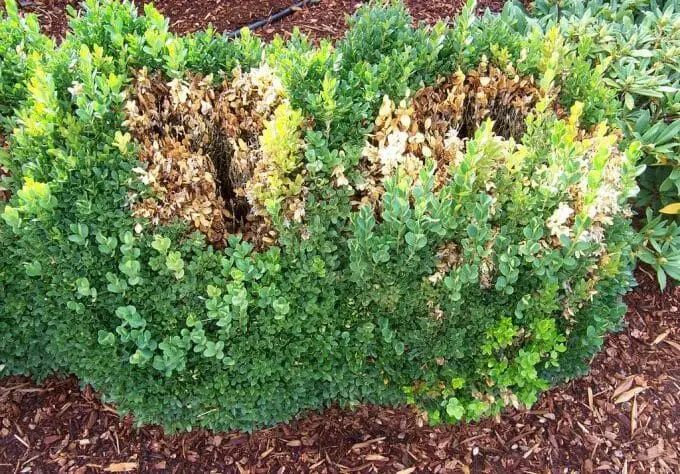

In Virginia boxwood blight was first identified in a nursery location in Carroll County in 2011. Unfortunately, it happens all too often that the symptoms appear too late in the season to provide treatment. Protective fungicides can be used to prevent infection in remaining plants, especially when the conditions favorable for infection are expected. Old fallen leaves and diseased leaves that have accumulated in the. Thinning is a type of pruning that removes interior stems. An important measure to help prevent and control Volutella is thinning (instead of shearing) boxwood to improve air circulation and light penetration. Fortunately, box responds well to clipping (which is why it is such a good hedge and topiary plant) and will also respond to box blight by producing new shoots.īoxwood blight (also known as box blight), caused by the fungus Calonec- tria pseudonaviculata1, is a serious fungal disease of boxwood that results in defoliation and decline of susceptible boxwood. Diseased branches should be pruned out and when the foliage is dry. Keeping this in consideration, can Buxus recover from blight?īox blight doesn't kill the roots of box plants so in theory they can recover if cut back. Drip irrigation and soaker hoses can be used to help keep the foliage dry.
#Boxwood blight treatment free#
Keep the soil under plants clean and free of garden debris. As an Amazon Associate I earn from qualifying purchases. Find the top 8 most popular items from list brands as scotts, quest, hydrofarm, bonide, bioadvanced. Make sure to disinfect your pruning shears (one part bleach to 4 parts water) after each cut. Discover the Best Fungicide For Boxwood Blight in Best Sellers. 
In Virginia boxwood blight was first identified in a nursery location in Carroll County in 2011.
Prune or stake plants to improve air circulation and reduce fungal problems. Boxwood blight (also known as box blight), caused by the fungus Calonec-tria pseudonaviculata 1, is a serious fungal disease of boxwood that results in defoliation and decline of susceptible boxwood. Successful and sustainable landscaping with boxwood currently requires knowledge, attention and care. Although boxwood blight is serious and spreading in many communities in Virginia, boxwood remains a valuable landscape ornamental. You should apply fungicides when temperatures exceed 60☏ and rainfall is expected.Īlso Know, how do you treat blight? Treatment Management decisions will influence the disease progression. The goal of successful chemical applications is to prevent disease. Subsequently, one may also ask, how do you treat boxwood blight?įungicides are effective at protecting plants from boxwood blight infection, but do not cure plants with the disease. pseudonaviculata is present, symptoms are merely suppressed with fungicides. The more effective homeowner fungicides for the control of boxwood blight are chlorothalonil or chlorothalonil mixed with thiophanate methyl. There are no curative treatments for boxwood blight. Apply fresh mulch beneath the plants to reduce the chances of reinfection from spores that could splash from the soil onto foliage. Since there is currently no known cure for boxwood blight, a defensive treatment to prevent the blight is the best course of action.






 0 kommentar(er)
0 kommentar(er)
